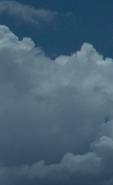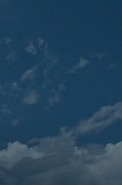Where the original martial art originated from may remain a mystery
forever but what is recorded is the fact that about fourteen hundred
years ago the founder of Zen Buddhism left India and travelled alone to
China to present lectures on Buddhism. A trip of several thousand miles
in times where bandits where plentiful, forests were wild, the terrain
was rough, and the people needed protection from the wildlife instead of
the other way around.
Daruma (Bodhidharma) eventually ended up at a Shao-lin Temple in
Hunan Province lecturing on Buddhism. It's said that "a great multitude
of followers fell from exhaustion from the harshness of his training."
Daruma set forth a method by which the priests were able to develop
their strength both physical and spiritual so that they could finish
their training. This method came to be called Shorin-Ji Kempo. This
system eventually found it's way to the Ryukya Islands 300 miles south
of China, 300 nautical miles North of Taiwan, and 400 nautical miles
east of China, and developed into Okinawa-te and this developed into
Karate.
About five hundred years ago a national policy came about under which
possession of any and all weapons by the people of Okinawa were
forbidden. Then about two hundred years later weapons on the Ryukyu
Islands had been confiscated by the government when the islands came
under the scrutiny of the Satsuma Clan of Japan. Since the people
weren't allowed traditional weapons with which to defend themselves they
had to use improvised weapons made from common farm implements, refine
the art of unarmed combat, and train in secret.
In those bygone days when bandits roamed the countryside armed with
sword and staff, and the nobility had the right to maim and kill at
their slightest whim Karate was not a sport were the loser went home. It
was life or death with no time or room for hesitation or doubt. The
movements had to be automatic, precise, and lethal.
Kata is one of the training tools that the Karataka used to condition
there sub concise for instant response to attacks. Kata contains in
them stances, blocks, strikes and combinations of techniques that must
be used with out the slightest hesitation in order to insure your
survival.
In today's time kata serves all of these purpose and more. Kata helps
us to maintain a sense of origins of our art. Kata helps us to focus
our minds, and relieve stress. Kata strengthens our bodies and minds
into a single unit able to accomplish more together than apart. This
synergy is the secret that most non-karate practitioners can never hope
to understand or defeat.
Karate is more than a fighting style, more than an art, it's a way of
life and kata allows us a chance to understand what the original
masters of our art meant and were trying to convey to us their
descendants.
The Okinawan island chain is situated roughly midway between southern
Japan and the Chinese mainland and was an important trading post during
the middle ages. Sailors from Thailand, the Philippines, Korea, China
and Japan met in Okinawa to trade, and bought with them their own
customs and knowledge. The Chinese in particular bought many things to
Okinawa including the domestic pig - now a staple of Okinawan cuisine -
and formalised fighting systems, what we now now as martial arts.
There are few surviving records from Okinawa during the middle ages
but it is believed that all weapons were banned from the islands (by one
of the Okinawan rulers) in around 1470. What is for certain is that in
1609 the Satsuma domain of Japan invaded and captured the islands and
that all surviving weapons were confiscated. It is generally accepted
that martial arts systems rapidly gained popularity in Okinawa at this
time as a response to these prohibitions.
Martial arts were trained in secrecy under Japanese rule and
therefore little is certain about the origins of what we now
call karate. However the most plausible theory is that the Okinawan
fighting systems were largely based on the martial arts of southern
China.
 Gichin
Funakoshi was born in Shuri, Okinawa in the year of the Meiji
Restoration around 1868. Funakoshi first met Master Asato when he was a
schoolmate of Asato's son. He called Asato "one of Okinawa's greatest
experts in the art of karate." According to Funakoshi, Asato's family
belonged to the Tonochi class (hereditary town and village chiefs), and
held authority in the village of Asato, halfway between Shuri and Naha,
and he was not only a master of karate, but also skilled at riding
horses, Jigen-ryu kendo (swordsmanship), archery, and an exceptional
scholar. According to Gichin Funakoshi's own recollections he started
studying karate under Master Asato in 1879, at the age of eleven. He
travelled at night to the Asato household to avoid detection, as the
practise of martial arts was still prohibited in Okinawa.
Gichin
Funakoshi was born in Shuri, Okinawa in the year of the Meiji
Restoration around 1868. Funakoshi first met Master Asato when he was a
schoolmate of Asato's son. He called Asato "one of Okinawa's greatest
experts in the art of karate." According to Funakoshi, Asato's family
belonged to the Tonochi class (hereditary town and village chiefs), and
held authority in the village of Asato, halfway between Shuri and Naha,
and he was not only a master of karate, but also skilled at riding
horses, Jigen-ryu kendo (swordsmanship), archery, and an exceptional
scholar. According to Gichin Funakoshi's own recollections he started
studying karate under Master Asato in 1879, at the age of eleven. He
travelled at night to the Asato household to avoid detection, as the
practise of martial arts was still prohibited in Okinawa.
In 1902 the ban on martial arts was lifted when Shintaro Ogawa, the
Commissioner of Education recommended that martial arts should be
included in school physical education classes. Fortunately Gichin
Funakoshi was a teacher by this time and by 1903 he had introduced
karate into the public school system at the Men's Normal School and the
Daiichi Middle School.
In 1917, Gichin Funakoshi was invited to Japan to demonstrate his
karate at the Butokuden in Kyoto. After the demonstration he stayed in
Japan and continued to give exhibitions. In 1922 he was invited to give a
demonstration of Karate at the First National Athletic Exhibition in
Tokyo, which was organised by the Ministry of Education. This proved to
be a decisive moment in the history of karate. After the demonstration,
Gichin was approached by Jigaro Kano, the founder of judo. He asked
Funakoshi to stay longer in Japan and show him some basic techniques.
In 1928, he was asked to give a demonstration for the royal family of
Japan. It is difficult for us to understand how much of an honour this
must have been to Gichin Funakoshi - the royal family were revered as
living God's - but it was made all the greater because the demonstration
was to take place on the palace grounds!
Karate's popularity continued to grow. Karate clubs had been and
continued to spring up at colleges, universities and businesses
throughout Japan. All this time, Funakoshi kept a dojo at the Meisei
Juku. However, time and an 1923 earthquake eventually created the need
for a new place to train. Funakoshi was offered to use space at the
kendo hall of Hiromichi Nakayama. Eventually, Funakoshi Sensei was given
another great honour. Nationwide, karate practitioners chipped in to
pay for the construction of a dojo dedicated to the instruction of
Funakoshi's karate.
Shotokan is named after Funakoshi's pen name, Shoto, which means
"pine waves" or "wind in the pines". In addition to being a karate
master, Gichin Funakoshi was an avid poet and philosopher who would
reportedly go for long walks in the forest where he would meditate and
write his poetry. Kan means training hall, or house, thus Shotokan
referred to the "house of Shoto". This name was coined by Funakoshi's
students when they posted a sign above the entrance of the hall at which
Funakoshi taught reading "Shoto kan". Shoto-kan karate was born!
In 1948 Funakoshi established the Japan Karate Association and he remained the head of the JKA until his death in 1957.
 Masatoshi
Nakayama began studying Shotokan under Funakoshi Sensei at Takushoku
University in 1932. By the time of Funakoshi Sensei's death Nakayama was
a senior student of the JKA and took over the role of head of the
Association.
Masatoshi
Nakayama began studying Shotokan under Funakoshi Sensei at Takushoku
University in 1932. By the time of Funakoshi Sensei's death Nakayama was
a senior student of the JKA and took over the role of head of the
Association.
Nakayama Sensei's influence had a profound effect on the way Shotokan
Karate then developed. He refined karate teaching methods using sports
science methodologies, and introduced innovations such as an instructor
programme and karate's first ever competition system.
Nakayama Sensei also masterminded a plan to popularise karate outside
of Japan. The highly trained graduates of his instructor program were
encouraged to go out into the wider world to found new shotokan dojos.
It is largely thanks to Nakayama Sensei's vision that many of us have
had the awesome experience of being taught karate by some of Shotokan
karate's legends.
Nakayama Sensei passed away in 1987, at the age of 74.

















